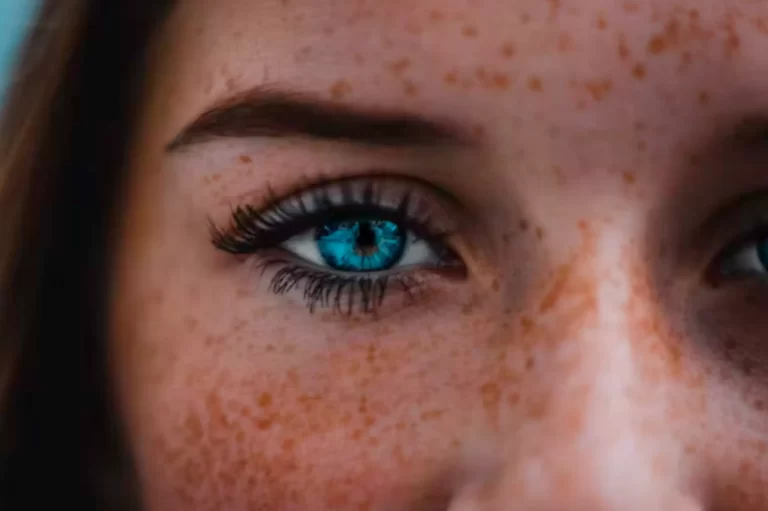Do Color Blind Contacts Work: Understanding Their Effectiveness
Color blindness is a common condition affecting many people worldwide. While it may seem like a simple issue of not being able to distinguish certain colors, it can significantly impact daily life. Special contact lenses are now available that claim to improve color vision for those with this condition. These color blind contacts can enhance color perception, allowing users to see a broader range of colors that they may otherwise miss.
These lenses work by filtering specific wavelengths of light to make certain hues appear more distinct. Many types have been developed to address various forms of color vision deficiency, including red-green and blue-yellow deficiencies. These lenses are designed to help users discern these colors, providing a more vibrant and accurate visual experience. Although they do not cure color blindness, the enhancement they offer is often enough to improve the quality of life for those affected.
The decision to use these contacts should be made carefully, considering factors like the specific type of color deficiency and lifestyle needs. Engaging in activities that depend heavily on color identification can be greatly assisted with the use of these lenses. For anyone wondering if color blind contacts are effective, the answer lies in their ability to enhance color perception and improve day-to-day visual experiences.
Key Takeaways
- Color blind contacts help enhance color perception.
- They filter light to improve distinction of colors.
- Choosing the right contacts is important for effectiveness.
Overview of Color Blind Contacts
Color blind contacts are designed to help people who have trouble distinguishing certain colors. These lenses work by filtering specific wavelengths of light, allowing for improved color differentiation. They are particularly helpful for individuals with red-green or blue-yellow color deficiencies.
There are two main types of color blind contacts: chromatic and anomalous. Chromatic lenses target red-green color deficiencies, using pigments to absorb certain light wavelengths.

Meanwhile, anomalous lenses focus on blue-yellow deficiencies, adjusting the light entering the eye for better color perception.
Color blind contacts are crafted from special materials such as gel or film, placed over the eye. This technology aims to give users better color vision while maintaining comfort and usability. The lenses can also offer increased independence and confidence in daily activities.
One of the notable benefits of these lenses is their wide range of view due to the absence of frames, unlike traditional glasses. They align with the curvature of the eye, reducing vision obstructions. This makes activities like driving or playing sports more accessible and enjoyable.
Although these contacts can be beneficial, they are not a cure for color blindness. Individuals considering them should consult an eye care professional to ensure they choose the best option for their specific needs. Links and recommendations from specialists can ensure users receive high-quality lenses that fit their conditions. More about this can be found on websites like All About Vision.
How Color Blind Contacts Work
Color blind contacts are designed to help those with color vision deficiencies by filtering specific wavelengths of light.
These contacts are typically crafted from specialized plastic materials. They contain filters in the form of a gel or film. The filters are tuned to address common issues like red-green color blindness.
By altering the way light enters the eyes, these lenses improve how users perceive colors. They enhance the contrast between confusing hues, making it easier to differentiate between them. This is particularly helpful for distinguishing red and green shades.
There are different types of color blind contacts available. Common variations include chromatic and anomalous lenses. Chromatic lenses focus on amplifying color separation, while anomalous lenses adjust the intensity of certain colors.
These lenses don’t cure color blindness. Instead, they help those with the condition see colors more accurately. People using these contacts can often see a wider range of shades and experience fewer vision obstructions.
For more information, you can read about best color blind contacts review.
How Does I Know Colorblind Contacts Works for Me?
The video demonstrating take Ishihara test.If you achieve good results while watching the video,it’s an indication that the colorblind contacts and glasses will be effective in helping you pass the test.
Benefits of Color Blind Contacts
Color blind contacts are designed to help individuals with color vision deficiency see colors more accurately. These special lenses can enhance hues, especially red and green, making daily tasks easier and more enjoyable. They provide a chance for people with color blindness to experience a broader spectrum of colors.
Improved Vision in Everyday Life
People with color blindness often face challenges in activities that require color recognition. Using contact lenses for color blindness can assist them in tasks such as identifying traffic lights or selecting ripe fruits. This improvement can lead to better overall safety and convenience in daily routines.
Academic and Professional Advantages
Color recognition plays a crucial role in many educational and professional settings. By wearing color blind contacts, students can better understand visual materials used in classrooms. Similarly, professionals can pass tests like the Ishihara Color Plate Test, which can be important for certain careers.
Unlike colorblind glasses, which can be noticeable, colorblind contact lenses are discreet and cannot be easily identified by testers or inspectors, allowing for a more natural testing experience.
Enhanced Recreational Experiences
For those who enjoy hobbies or sports, color blind contacts can make a big difference. Athletes may find it easier to distinguish team colors, improving their gameplay and performance. Even indoor activities like board games can become more enjoyable with clearer color perception.
Safety Improvements
These lenses can enhance one’s ability to detect dangerous signals, such as traffic lights, which is particularly helpful for those with red-green color blindness. This can significantly enhance personal safety during activities like driving.
Adopting color blind contacts offers multiple benefits, providing users a richer and more comprehensive visual experience.
Types of Color Vision Deficiency and Corresponding Contacts
Color vision deficiency affects how people perceive colors. It is important to understand the different types and how contact lenses may help.
Red-Green Deficiency is the most common type. It can make it hard to tell the difference between reds and greens. Chromatic lenses with special pigments can help improve vision for those with this deficiency. Learn more about them at chromatic lenses.
Blue-Yellow Deficiency is less common and affects how blue and yellow colors are seen. Anomalous lenses are designed to help correct this type. They adjust the wavelengths of light to aid color perception.
Achromatopsia, or complete color blindness, is rare. This condition affects a very small number of people. While typical lenses may not fully correct it, advancements like the ColorCorrective system offer potential improvements in vision.
Limitations and Considerations
Despite their benefits, color blind contacts are not a universal solution. They cannot restore normal color vision but only enhance perception to some degree. The effectiveness of these lenses can differ based on the type and severity of color blindness.
Not all users experience significant improvement. Chromatic lenses designed for red-green deficiencies and anomalous lenses for blue-yellow deficiencies may not perform equally for everyone. Some individuals may find it challenging to adjust to the lenses initially, and they may also be more costly than standard lenses.
It is crucial for users to consult with eye care professionals to determine suitability, ensuring the contacts meet their specific needs.
Personal Experiences
Personal experiences with color blind contacts vary, with some users expressing satisfaction in their enhanced ability to distinguish colors in specific contexts, like at work or during leisure activities.
Other users mention initial discomfort while their eyes adapt to the lenses, which usually subsides over time. The adjustment period can vary, but patience often leads to better results as the brain learns to process the new visual information.
While some people notice significant improvements, others may feel only minor enhancements in color perception. Personal expectation management is important, as the results can be subtle and depend on individual factors.
Feedback from users often highlights the balance between the benefits and minor inconveniences, providing insight into their effectiveness.
Choosing the Right Color Blind Contacts
Selecting the most suitable color blind contacts involves understanding various factors, including professional advice, accessibility, and costs.
Consulting with an Eye Care Professional
Before making a choice, it’s essential to talk to an eye care professional. They can assess your color vision thoroughly. This assessment helps determine the specific type of color vision deficiency you have. Professionals use various tests to understand how your eyes perceive colors.
Once the assessment is complete, they recommend contact lenses that can improve color perception. These lenses are tailored to address individual needs and correct specific deficiencies. By consulting with experts, individuals receive personalized guidance, ensuring the contacts are both effective and comfortable.
Availability and Accessibility
Color blind contacts are becoming more available in various regions. Some optical stores and online retailers provide a range of options. The lenses are designed to fit the curvature of the eye perfectly, providing a comfortable wearing experience. Accessibility often depends on the specific product and the supplier’s reach.
However, obtaining a prescription remains crucial. Without it, customers might risk purchasing lenses that are ineffective or unsafe. Collaboration with trusted suppliers ensures users access legit products. Accessibility is broadening, yet it’s vital to explore different providers to find the best fit for personal needs.
Cost Analysis
The cost of color blind contacts can vary significantly. Prices are influenced by several factors, including the complexity of the lens design and the supplier. Specialty lenses that correct color vision are usually more expensive than standard contact lenses. This is due to the specialized technology used to filter specific wavelengths of light.
Insurance may cover some costs, but many people pay out-of-pocket. Comparing prices from multiple providers can help in finding more affordable options. Evaluating whether long-term use is feasible based on cost should also be considered. Understanding these financial aspects helps in making an informed decision.
Alternatives to Color Blind Contacts
For those seeking alternatives to color blind contacts, several options are available. Some people may find these alternatives more effective or convenient depending on their lifestyle and specific needs.
Color Blind Glasses
Color blind glasses are a popular option. They use special lenses to enhance color distinction. These glasses can help individuals differentiate between shades that are typically difficult to see. They are widely available in various styles and prescriptions.
Color Filter Apps
Apps on smartphones and tablets can also assist. These apps often include adjustable color filters. The filters offer visual modifications that can aid in distinguishing colors. They are portable and can be customized for individual preferences.
Vision Therapy
Vision therapy may benefit some individuals. Although it doesn’t cure color blindness, it provides exercises designed to improve eye function and visual processing. These exercises can help strengthen the eye-brain connection over time.
Special Lighting
Changing the lighting in different environments can also help. Using lamps or light bulbs designed to enhance color perception is one approach. Correct lighting may reduce color confusion, particularly in workspaces or at home.
Assisted Technology
Several devices and gadgets exist to support color recognition. These tools often give audio feedback about the color they detect when scanned over objects. Such technology aids in everyday tasks and enhances independence.
Finding the right alternative can depend on the individual’s preference. Exploring these options might reveal a suitable solution for those with color vision deficiency.
Conclusion
Color blind contacts can help people with color vision deficiency improve their perception of colors. These contacts work by filtering out specific wavelengths of light, enhancing color contrasts. This makes it easier for individuals to distinguish between colors they usually find challenging to differentiate.
Individuals often need to work with an eye doctor to select the right type of lenses. It’s important to consider that results may vary. Some people experience significant improvement, while others may only notice slight changes.
Other options like color-correcting glasses or digital tools may also aid those with color vision deficiency. These alternatives can complement the use of contacts or provide support when contacts are not suitable.
Frequently Asked Questions
Contact lenses for color blindness offer a potential solution for many, providing improved color differentiation for those with color vision deficiencies. Learn more about purchasing options, costs, their effectiveness for red-green color blindness, and the possibility of prescription lenses having color correction.
How much do color blindness corrective contact lenses typically cost?
Colorkinds colorblind contacts offer 99 USD Per Units. and Often, it depends on the provider and the level of customization required. Consumers should expect prices higher than regular contacts due to the advanced technology involved in filtering specific wavelengths of light.
Can prescription lenses also include color blindness correction?
Prescription lenses may be crafted to include color blindness correction, allowing individuals to address both vision clarity and color differentiation needs. It is essential to consult with eye care professionals to explore this option and ensure that both vision and color correction are properly addressed.
Are contact lenses effective in treating red-green color blindness?
Yes.Color blindness contact lenses are particularly aimed at enhancing color perception for those with red-green color blindness.
Is it possible to correct color blindness using contact lenses?
Yes.The lenses are designed to improve color perception rather than curing the deficiency. They enhance the contrast between different colors, allowing individuals to see a fuller range of hues, particularly for everyday tasks and color recognition.
How long do colored contact lenses last?
The lifespan of colored contact lenses depends on whether they are daily, bi-weekly, or monthly lenses. Daily lenses are designed for single use, while bi-weekly and monthly lenses can last for several weeks with proper care.
Is it safe to wear contact lenses every day?
Yes, it is generally safe to wear contact lenses every day, provided you follow the care instructions and hygiene practices recommended by your eye care professional. However, it’s important to give your eyes regular breaks and ensure the lenses are suitable for daily wear








